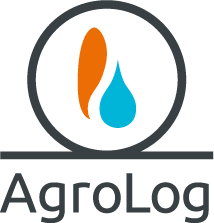Optimal Grain Storage with Crop Level Measurement Radar
In the grain storage industry, maintaining accurate and reliable information on crop levels is crucial. Traditional methods of manually measuring grain levels can be time-consuming, inaccurate, and even dangerous. Thankfully, advancements in technology have introduced innovative solutions like Crop Level Measurement Radar, offering a more efficient and dependable approach.
This blog post dives into the world of Crop Level Measurement Radar, exploring its functionalities, advantages, and how it revolutionizes grain storage management.
Understanding Crop Level Measurement Radar Technology
Crop Level Measurement Radar utilizes advanced radar technology to precisely measure the level of grain stored within a bin or silo. The radar emits electromagnetic waves that penetrate the grain mass and reflect off the surface. By analyzing the reflected waves, the system calculates the distance between the radar and the grain surface, providing a real-time measurement of the crop level.
Benefits of Utilizing Crop Level Measurement Radar
Enhanced Accuracy and Reliability: Radar technology offers superior accuracy compared to traditional manual methods, minimizing the risk of human error and ensuring consistent measurements.
Real-Time Monitoring: Gain instant insights into your grain inventory levels, enabling proactive management decisions.
Improved Inventory Management: Accurate crop level data empowers you to optimize storage space allocation, streamline grain movement, and minimize shrinkage.
Increased Safety: Eliminate the need for manual bin entry, reducing the risk of accidents associated with confined spaces.
Data-Driven Decision Making: Combine crop level data with other crucial factors like grain temperature and moisture content to gain a holistic understanding of your grain health and make informed storage decisions.
Beyond Measurement: The Power of Data Integration
Crop Level Measurement Radar goes beyond just providing measurements. By integrating this data with other grain storage monitoring systems, such as temperature and moisture sensors, you can create a comprehensive picture of your grain's condition. This real-time data allows for:
Early Detection of Spoilage: Identify potential issues like moisture buildup or temperature fluctuations before they escalate into spoilage problems.
Preventative Maintenance: Schedule maintenance activities based on actual grain storage conditions, optimizing resource allocation and preventing equipment failures.
Improved Grain Quality: Maintain optimal storage conditions to ensure the quality and integrity of your grain throughout the storage period.
In conclusion, Crop Level Measurement Radar represents a significant advancement in grain storage management. By providing real-time, accurate measurements and facilitating data integration, this technology empowers grain storage operators to optimize operations, minimize risks, and ensure the quality and safety of their crops.


